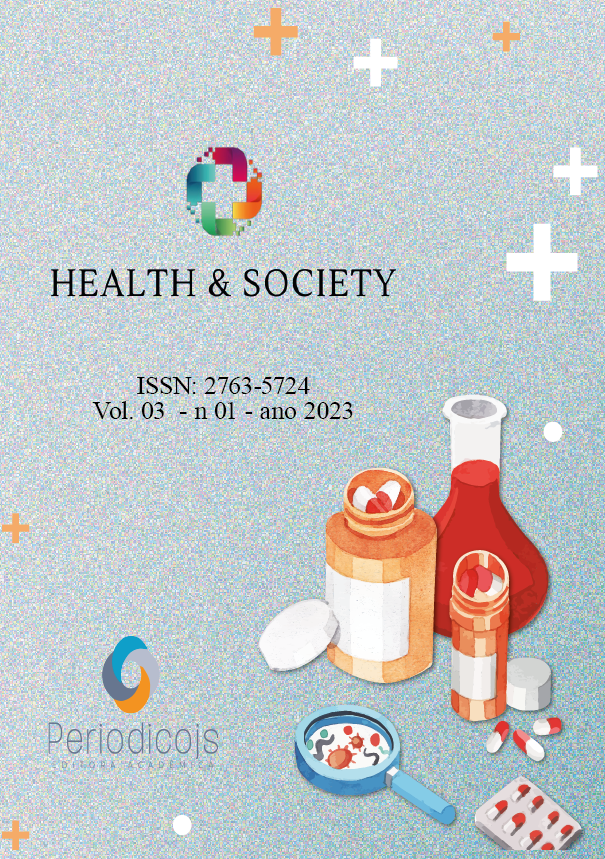Resumo
Non-restorative treatment, along with atraumatic restorative treatment (ART) are considered minimally invasive procedures within dentistry. Non-restorative treatment basically consists of preventing, controlling and reversing the carious lesion and atraumatic restorative treatment (ART) in the removal of carious tissue using manual instruments, promoting remineralization of both enamel and dentin. These techniques are considered as an alternative to control fear and anxiety within Pediatric Dentistry, in patients with behavioral problems, in cases of anxious, non-collaborative children or those with systemic impairments. Thus, the present work turns to a literature review with the objective of comparing Atraumatic Restorative Treatment and Non-restorative Treatment within their indications for long-term caries control, describing the materials that are used and methods used. As a result, we observed the effectiveness of fluoride in its various compositions, the ability to prevent carious lesions using Silver Fluoride Diamine, the regression of lesions through the use of casein and the benefit of ART in reducing dental anxiety and patient discomfort. It is concluded that the type of treatment to be chosen depends on the characteristic and degree of the lesion. In the case of superficial stains, the procedure adopted is non-restorative and in the case of dentinal cavities, ART offers good results.
Referências
BRIZON, V. C.; MELO, Raquel R.; ZARZAR, Patrícia Maria; GOMES, Viviane Elisângela; OLIVEIRA, Ana C. Borges. Indicadores socioeconômicos associados à cárie dentária: uma revisão crítica. Revista Unimontes Científica, Montes Claros, v. 16, n.1, jun. 2014. Disponível em: http://www.ruc.unimontes.br/index.php/unicientifica/article/view/309
CAMARGO, Bruna; PAVINATO, Larissa C.; CARDOSO, Moisés; BERVIAN, Juliane; PERUSSOLO, Berenice; PATUSSI, Eduardo. Características de pacientes com cárie severa da infância: análise de pacientes atendidos em centro de referência. Revista da Faculdade de Odontologia - UPF, Passo Fundo, v. 23, n. 2, p.133-138, ago. 2018. Disponível em: http://docs.bvsalud.org/biblioref/2018/10/947623/8776-bruna-camargo.pdf
DORRI, M.; et al. Atraumatic restorative treatment versus conventional restorative treatment for mananging dental caries. Rev.Copyright the Cochrane Collaboration Published by Jhon Wiley & Sons, Ltd.Chile, v.12, p. 2, 2017. Disponível em: https://pubmed.ncbi.nlm.nih.gov/29284075/
FONSECA, Lívia M. Prado; OLIVEIRA, Ana L. B. Martins de; DOMINGOS, Patrícia Aleixo dos Santos. Tratamento restaurador atraumático: alternativa viável para a promoção de saúde bucal. Revista Uningá, v.1, n.3, p.39-49, 2010. Disponível em: https://www.mastereditora.com.br/periodico/20130708_113411.pdf
FOSCHETTI, J. H. M. Tratamento restaurador atraumático associado a medidas preventivas na saúde pública brasileira. 2010. 34 . (Especialização em odontologia). Curso de Especialização em Atenção Básica em Saúde da Família, Universidade Federal de Minas Gerais – UFMG, Formiga, 2010. Disponível em: https://www.nescon.medicina.ufmg.br/biblioteca/imagem/0699.pdf
FRENCKEN, J. E.; Atraumatic restorative treatment and minimal intervention dentistry. Rev.British Dental Journal. Nijmegen, v.223, n. 3,p. 22-17 11,2017. Disponível em: https://pubmed.ncbi.nlm.nih.gov/28798450/
FRENCKEN, J. E.; et al. Minimal intervention dentistry for mananging dental caries. Rev. FDI World Dental Federation. Nijemegen, v.62, p. 223-243, 2012. Disponível em: https://pubmed.ncbi.nlm.nih.gov/23106836/
KUHNEN, M.; BURATTO, G. M.; SILVA, P. Uso do tratamento restaurador atraumático na Estratégia Saúde da Família. Revista de Odontologia da UNESP, São Paulo, v.42, n.4, p.291-297, 2013. Disponível em: https://www.academicoo.com/artigo/uso-do-tratamentorestaurador-atraumatico-na-estrategia-saude-da-familia
LOSSO, Estela M. et al. Cárie precoce e severa na infância: uma abordagem integral. Jornal de Pediatria, Curitiba, v.85, n.4, p.295-300, 2009. Disponível em: https://www.scielo.br/scielo.php?pi75572009000400005&script=sci_arttext
RAMADAN, Y. H.; KOLTERMANN, A. P.; PIOVESAN, C. Cárie dentária em crianças brasileiras: tendência e polarização. Ciências da Saúde, Santa Maria, v. 15, n. 1, p. 137-146, 2014. Disponível em: https://docplayer.com.br/5891312-Carie-dentaria-em-criancasbrasileiras-tendencia-e-polarizacao-1-dental-caries-in-brazilian-children-trend-andpolarization.html
SCHWENDICKE, F.; et al. Interventions for treating cavitated or dentine carious lesions. Rev. Copyright the Cochrane Collaboration Published by Jhon Wiley & Sons, Ltd.Uk, v.7, p.2 2021. Disponível em: https://pubmed.ncbi.nlm.nih.gov/34280957/
SEIFO, N.; CASSIE, H.; RADFORD, J.; INNES, N. “It’s really no more difficult than putting on fluoride varnish”: a qualitative exploration of dental professionals views of silver diamine fluoride for the management of carious lesions in children. Rev. Seifo et al. BMC Oral Health. Uk, p.20:257, 2020. Disponível em: https://pubmed.ncbi.nlm.nih.gov/32933507/
SHAH, A. H.; et al. Knowledge and Attitude among General Dental Practitioners towards Minimally Invasive Dentistry in Riyadh and AlKharj. Art. Journal of Clinical and Diagnostic Research. Saudi Arabia, v.10(7) zc 90-94, 01-2016. Disponivel em: https://pubmed.ncbi.nlm.nih.gov/27630962/
SHARDA, S.; GUPTA, A.; GOYAL, A.; GAUBA, K. Remineralization potential and caries preventive efficacy of CPP-ACP/Xylitol/Ozone/Bioactive glass and topical fluoride combined therapy versus fluoride mono-therapy-a systematic review and meta-analysis. Rev. Acta Odontológica Scandinavica. India,p.16-21, v.126, 2021. Disponível em: https://pubmed.ncbi.nlm.nih.gov/33459095/
SHWENDICKE, F.; et al. Managing Carious Lesions: Consensus Recommendations on Carious Tissue Removal. Rev.International & American Associations for Dental Research. Germany, v.28(2) 58-67, 2016. Disponivelem: https://pubmed.ncbi.nlm.nih.gov/27099358/
SVHWENDICKE, F.; FRENCKEN, J.; INNES, N. No removal and inactivation of Carious Tissue: Non-Restorative Cavity Control. Monogr. Oral SciBasel Karger. Amsterdam, v. 27, p. 124-136, 2018.Disponível em: https://pubmed.ncbi.nlm.nih.gov/29794458/
THIERENS, L. A. M.; et al. The in vitro remineralizing effect of CPP-ACP and CPP-ACPF after 6 and 12 weeks on initial caries lesion. Art. Journal of applied oral science. Belgium, v. 12,18 p. 8,18. n.24,19, 27; 2019. Disponível em: https://pubmed.ncbi.nlm.nih.gov/31116280/

Este trabalho está licenciado sob uma licença Creative Commons Attribution 4.0 International License.
Copyright (c) 2023 Bruna de Lima Piccinin Marçal Costa, Natália Biscola, Gabriela Macedo





